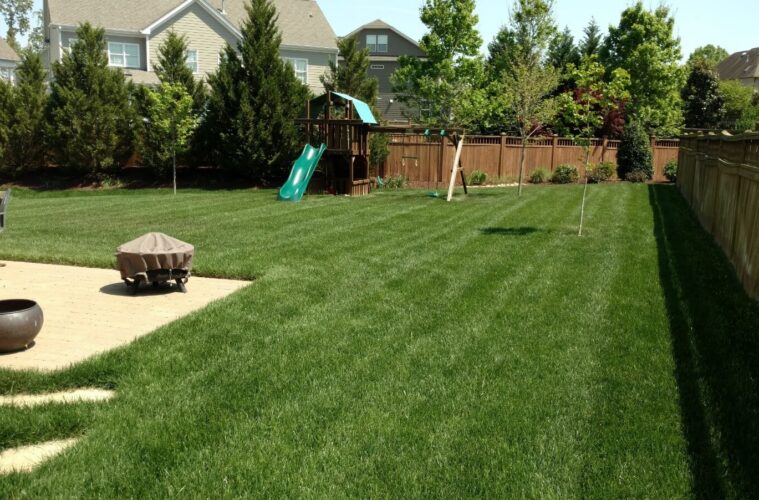Restoring a yard after winter and preparing it for the summer season is not easy and requires an integrated approach. When the warmer months arrive, you should help your lawn “wake up” so that you can enjoy fresh green grass later. Even the most neglected areas can be tidied up with a combination of intensive care and spot restorations. It is better not to delay and take repair measures at the slightest sign of illness. If you plan on doing it yourself, you may need tools such as a roller, lawn sweeper, leaf blower, scarifier (or dethatcher), mower, and hoe, as well as lawn seeds and fertilizer. This article will show you where to start and what to do to rebuild your yard after winter.
1. Leveling
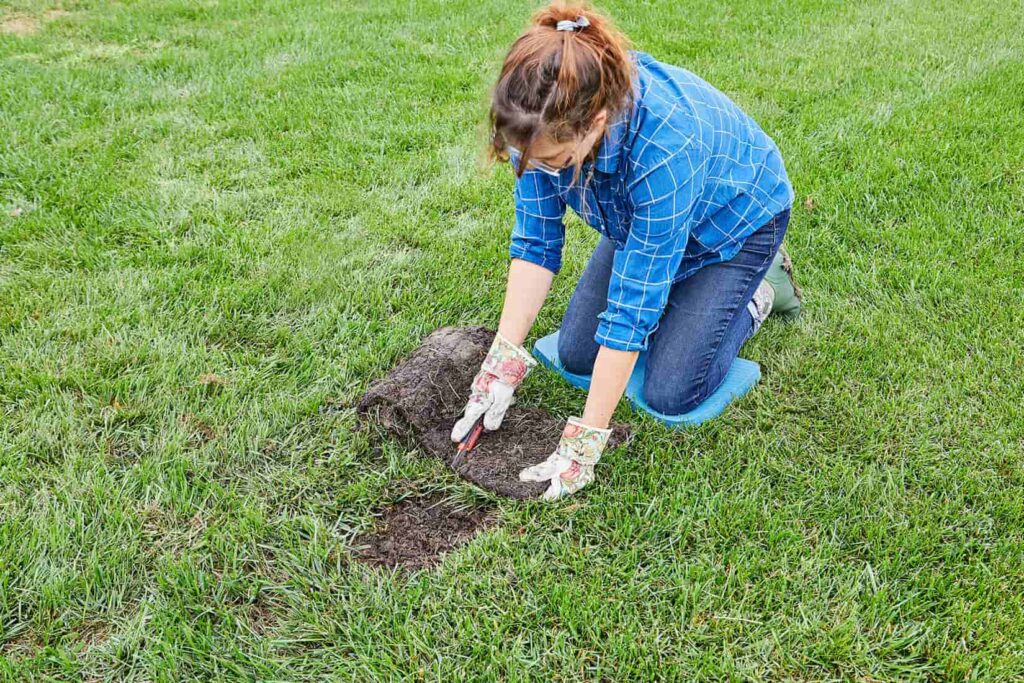
source: meredithcorp.io
If bumps and lumps appear on your site due to frost and frequent precipitation, they should be leveled. At this point, you need to use a lawn roller. Since it is rather heavy and not a universal tool, you can rent it instead of buying it. It can be a walk-behind device or a heavy roller that attaches to the back of a riding mower. In any case, its weight should be at least 130 pounds. The roller compresses the soil, makes the lawn level, and returns loose roots of the grass in place, thus preventing local drying out of the lawn, keeping it evenly green.
2. Clearing
You need to remove last year’s grass and moss from the lawn with a rake. It is better to use fan-shaped ones since ordinary ones can damage the grass cover that has weakened after winter. You should first comb the lawn in one direction and then perpendicular to it. If your yard is covered with leaves that have not been removed since fall, a powerful blower or sweeper can help clear it up. You can use a twisted rake to remove dead soil with old roots, but a scarifier (or dethatcher) will do it much faster. It is a device for quick and safe cleaning of lawns from dead grass and moss remnants. After scarification, small pits and bald spots may appear on the yard, but it is normal; with proper further care, the grass will recover soon.
3. Aerating
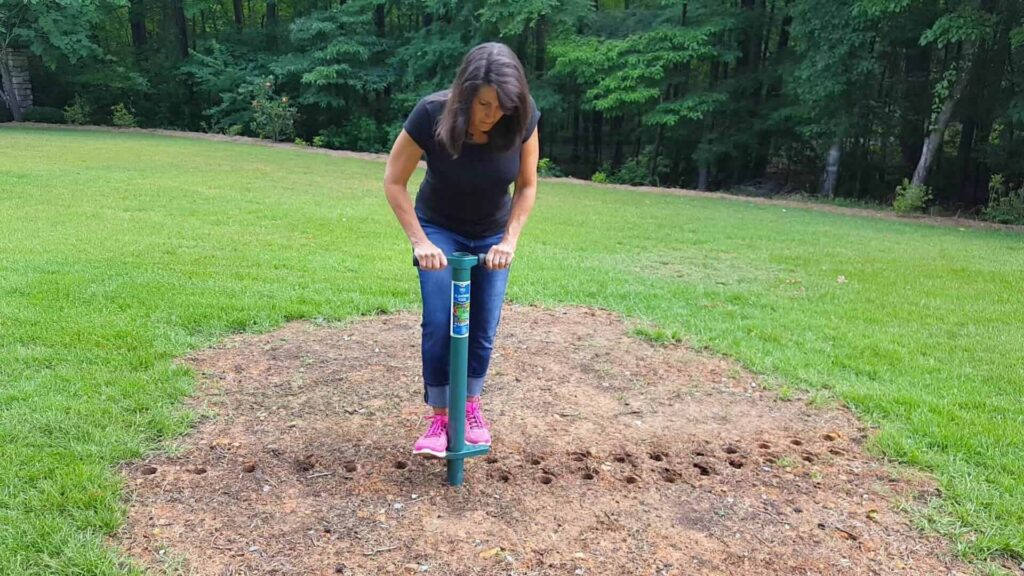
source: proplugger.com
Now you can treat the lawn with an aerator. It’s a device with long teeth that pierces holes in the turf. There are also foot aerators that attach to shoes. When choosing the optimal equipment, you need to proceed from the area of your site. You can treat a small lawn with your feet; for a larger yard, it is better to choose a power tool, and in huge areas, you cannot do without a powerful gas device. Aeration oxygenates the soil and helps remove weeds and dry grass. Regular aeration is beneficial for the lawn during the entire growing season: it improves the structure of the ground, delivers air to the roots of plants, and helps remove excess moisture from the soil.
4. Edge Trimming
It is a simple but essential step in lawn processing. With perfectly straight edges, your entire garden will look neat. Take a hoe or sharp knife and remove any bumps where they are.
5. Fixing Bald Patches
It often happens that after winter, bald patches or yellow spots form in some places. Severely damaged fragments that cannot be restored are best removed together with the top layer of sod. Fill holes and pits with soil or compost to level the surface and tamp it lightly.
Depending on the type of lawn you have, bare areas can be covered with pieces of roll lawn by size or with a bit of turf and grass cut from another part of the area. You can also sow new grass seeds. Remember that you need to take lawn grass seeds of the same varieties that already grow in your area, ideally from the same manufacturer for overseeding. If it is impossible, you can take a special mixture for lawn restoration.
The seeds should first be prepared. Mix them with a small amount of sand so that they do not stick together and are evenly distributed over the surface. Then scatter them on the ground by hand or with a special seeder. Pour a thin layer of earth or compost on top, distribute it evenly with a fan rake, and water well.
6. Fertilizing
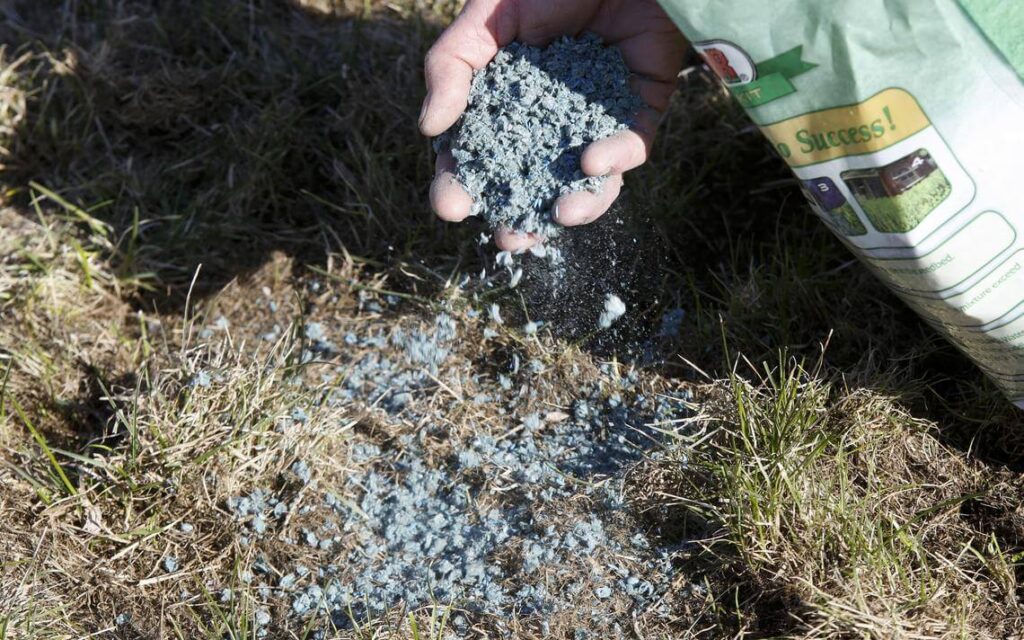
source: agweek.com
A dose of nitrogen fertilizer, which stimulates rapid growth, helps the lawn to recover and acquire that luscious green color that everyone is especially looking forward to after winter. Fertilizer can be urea, ammonium sulfate or chloride, sodium, calcium, or ammonium nitrate, as well as complex mixes for spring soil fertilizing. For a more even distribution of fertilizer, use a special seeder. After that, you need to water the lawn abundantly so that the dry pieces dissolve and are well absorbed into the soil.
7. Watering
For the lawn to retain a bright emerald color even in the heat, it needs watering 2-3 times a week. If we are talking about a small yard, then you can do it manually, but in most cases, it is more convenient to use special sprinklers that should be installed in the middle of the lawn. Evenly spray water over its entire area. The number of such tools for a specific yard is determined by the radius over which the picked sprinkler can distribute water. The jets of neighboring devices should reach each other. If you want to simplify the process, you can install an automatic irrigation system on your site. It will save not only time but also water, optimizing its consumption.
An important nuance: it is better to water the lawn in the morning. Watering at noon can cause the water to evaporate too quickly, and the bright sun combined with the droplets can lead to burns on the grass. And in the evening, on the contrary, moisture is no longer evaporating from the lawn, and, therefore, it causes excessive dampness, which is also harmful to plants.
It’s Time for Mowing!
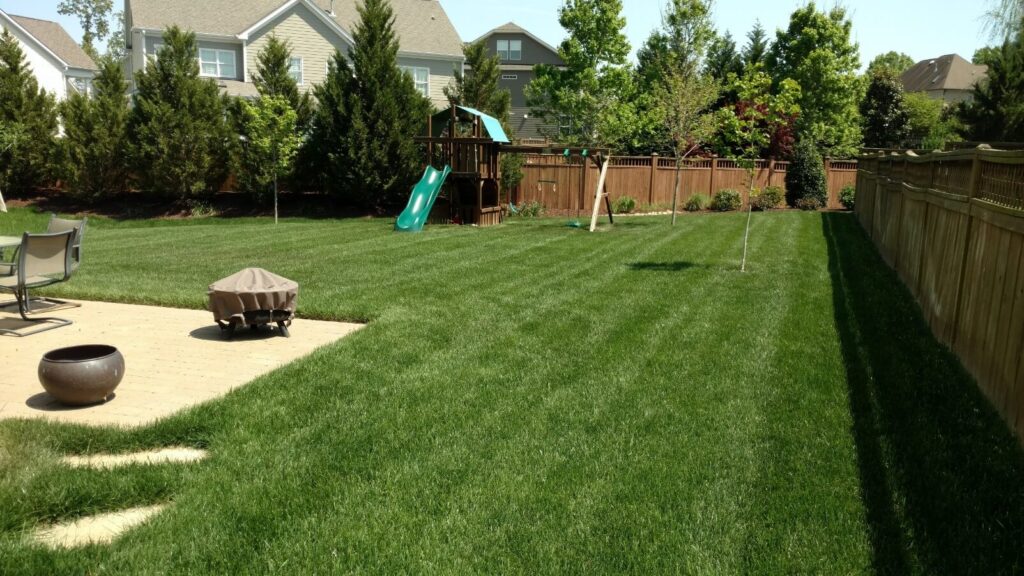
source: landscaping.com
The first lawn mowing should take place no sooner than the blades of grass reach 2 inches, and it should be done better with a rotary lawnmower that ensures a uniform length across the entire area. To maintain a well-groomed look of the grass, a lightweight and compact trimmer is also useful: it will help cut the grass even in hard-to-reach places. For spot care of your lawn, such as mowing around the trees or under bushes, use cordless shears. Their telescopic handles let you work without bending over. Your yard is now ready for the new season!

